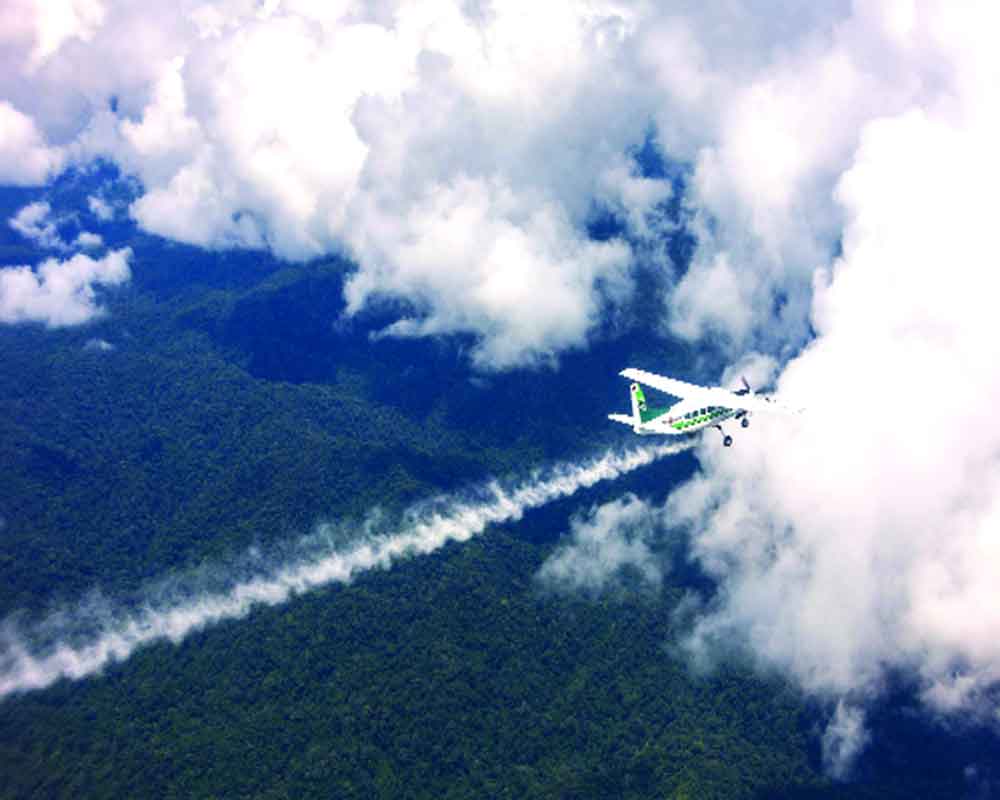While cloud seeding holds promise for supporting agricultural livelihood, this intervention also raises questions about its sustainability
The increasing severity of climate change makes it all the more urgent to consider creative ways to lessen its effect, particularly in vulnerable sectors like agriculture. One of the current alternatives is cloud seeding, a technical intervention designed to increase precipitation.While cloud seeding has the potential to alleviate drought, it also raises important considerations about sustainability, effectiveness, and long-term influence on agriculture. It is now up to us to investigate this developing practice and decide whether or not to incorporate it into our fight against climate change.
Cloud seeding, which involves introducing compounds such as silver iodide or even plain salt into the sky to increase cloud condensation and thus precipitation, is becoming a more popular practice in water-scarce places. The highest ideal that cloud seeding can achieve is increasing rainfall to replenish reservoirs and rivers, as well as soil moisture, all of which feed agriculture.
However, cloud seeding has shown to be a vital weapon in combatting long-term droughts, rescuing crops, and sustaining livelihoods in agriculture-dependent countries such as the United States, China, and the United Arab Emirates.Yet, cloud seeding will provide short relief, so climate change and its far-reaching effects on agriculture require a comprehensive adaptation and resilience strategy.
Climate change is more than just a temperature rise; it includes changes in precipitation patterns, increasing frequency and severity of meteorological events, and variations in growing seasons. These changes pose serious threats to global food security, necessitating an integrated approach to adaptation and resilience building. This is where the challenge of relying on cloud seeding for a solution arises.Though it seems like a quick answer for severe water shortages, its long-term viability and environmental impact are unknown. If not properly managed, the chemicals used in cloud seeding can hurt soil fertility, water quality, and even human health. This approach is unpredictable and dependent on meteorological circumstances, therefore it is not a fixed cure.Furthermore, cloud seeding doesn't address the underlying reasons for climate change.
Agriculture is one area that is deeply connected with climate systems and cannot be solved just through technological means.Other key modalities for achieving climate change resistance include sustainable farming, which can be improved by effective irrigation systems, soil conservation, crop diversification, and the introduction of drought-resistant crop types.Furthermore, the topic of cloud seeding must address a variety of ethical concerns. Who gets to pick where and when the clouds are seeded? What are the geopolitical consequences of influencing the weather? Seeding clouds over one location may inadvertently create adverse circumstances in another. Determining these multifarious problems will necessitate a free and open worldwide conversation to ensure that this technology is used equally and by justice values.
Negotiating the tumultuous currents of climate change, and cloud seeding serves as both a beacon of hope and a warning lesson.
It demonstrates our ingenuity--the ability to think up something new when confronted with a challenge--while also conveying a message about our need to proceed with caution and planning. Agriculture is the lifeline of many communities around the world, particularly in developing countries, and its resilience is crucial to our shared future.
While cloud seeding may serve as a temporary solution to the impending problem of water scarcity and its impact on agriculture, it cannot replace truly effective techniques for combating the bigger challenge posed by global warming.
If we want to ensure a future in which the Earth and all of its people thrive, we must make prudent investments in long-term mitigation methods centred on resilience, sustainability, and international collaboration.
Let it be viewed as a severe challenge that requires immediate attention; it should raise consciousness and move us beyond symptomatic solutions to create a world that is robust and sustainable.
(The author is a freelance writer and a motivator; views are personal)




















